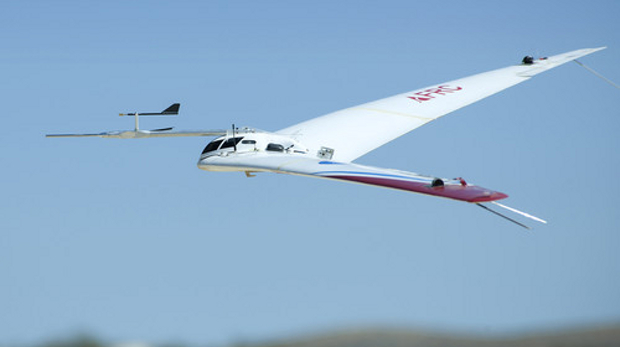NASA scientists are working on a plane that would be deployed from a rover’s landing system to fly across the Martian surface and take images of potential landing sites for future astronaut missions.
The plane, weighing less than a pound and with a two-foot wing span, would shoot out from a protective shell that would cover the rover during descent and landing.
Expected to be the first airplane to work on Mars, the craft is set to take its first test flight on the Red Planet in the 2020s.
As part of the prep for that, NASA researchers are getting ready to launch the winged craft from a high-altitude balloon sometime later this year.
The Preliminary Research Aerodynamic Design to Land on Mars, or Prandtl-m, would be released about 100,000 feet above the Earth, simulating the flight conditions of the Martian atmosphere, according to Al Bowers, NASA Armstrong chief scientist and Prandtl-m programme manager.
“The aircraft would be part of the ballast that would be ejected from the aeroshell that takes the Mars rover to the planet,” Bowers said in a statement. “It would be able to deploy and fly in the Martian atmosphere and glide down and land. The Prandtl-m could overfly some of the proposed landing sites for a future astronaut mission and send back to Earth very detailed, high-resolution photographic map images that could tell scientists about the suitability of those landing sites.”
The plane is designed to fly for about 10 minutes, gliding for about 2,000ft to the surface of Mars. Engineers expect it to cover about 20 miles on its descent.
Before the craft is sent to Mars, it will go through three tests on Earth.
The first will be this year’s high-altitude project to test how the aircraft works and help engineers calculate modifications that will allow it to fold up and deploy from the shell that surrounds the rover prior to landing.
“We could have one of two small science payloads on the Prandtl-m on that first balloon flight,” Bowers said. “It might be the mapping camera, or one might be a small, high-altitude radiometer to measure radiation at very high altitudes of Earth’s atmosphere. Eventually the aircraft may carry both of them at the same time.”
NASA said a second test flight, from a balloon, is scheduled for next year and would use an aircrft capable of returning to the launch site on a flight that could last as long as five hours as it glides back to Earth.
A third test flight is expected to involve a rocket carrying the craft to a much higher altitude.
“That mission could be to 450,000ft…,” Bowers said. “The aircraft would fall back into the Earth’s atmosphere, and as it approaches the 110,000 to 115,000ft altitude range, the glider would deploy just as though it was over the surface of Mars.”
Computerworld







Subscribers 0
Fans 0
Followers 0
Followers